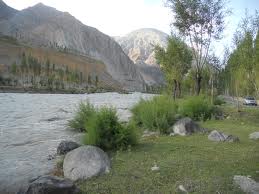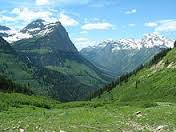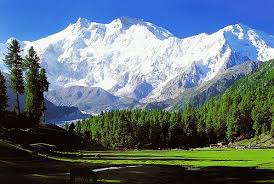history of gilgit
Author: princeafzalbarcha
golodass
Golodass (Anwer Abad) can be a Village located in District Ghizer Tehsil Punial Gilgit Baltistan. Any two hour or so Distance Concerning Gilgit Metropolis and Golodass (Anwer Abad), Dialects Spoken with Golodass are usually Burushaskhi, Shena, Khowar, Urdu. Golodass is well known For It is Green Magnificence and Huge batch Ranges Just about Villages are usually Hatoon, Hasis, Gahkuch bala, Damas, Silpi.
Golodass, previously named as “Golo koi” and its second brand ” Anwer Abad inches, with a population of 25000 people is found in Punial Ghizer Gilgit Baltistan. The Village had been drowned with 1905 through heavy floods but resettled with 1935. Raja of Punial, His Highness Raja Anwer Khan extensive the whole village by populating this barren upper part of the whole village with guide of Hub-e-Ali of Hunza with 1935. Raja Mir Aman Khan came through 1960 and started to run their first college as only teacher inside village. The Residents on the village are extremely migrants from different parts of Gilgit spot including Hunza, Punial spot, Yasin, Gupis, Phandar, Darel, Chilas, along with areas. On account of different with background, we get a mix lifestyle and languages inside village. The natives may speak Brushaski of Hunza and also Yasin, Shina, Khuwar and also Gujrati. The village is called the Hub of cultug.Most of people speakes brusaski .the brushaski spekar also caled hunza. 
beautiful golodass
traditional games of golodass
history of golodass
History]
Golodass is Previously known as “Golo koi” due to its dense population and its natural beauty. It was said that the sun couldn’t reach the ground because of its dense gardens but it was turned into desert when heavy floods hit the area in 1905 and drowned it. In 1928 and onwards the Raja of Punial, His Highness Raja Anwar Khan decided to populate the upper barren portion of the village. The difficult task was to bring water to the village though rocky mountains and sliding areas of HindukushTerrains. The Raja tried twice to make a canal from Ishkoman river but failed. Then His Highness contacted Hub-e-Ali of Hunza who was considered to be an expert in making water channels. Hub-e-Ali accepted this offer from His Highness Raja Anwar Khan and Shift to Golodass with his family. After so many difficulties and strong efforts Hub-e-Ali and other 13 members successfully build the canal in 1935. They stayed there with their family and work hard to turn this barren land into cultivation and started helping His Highness Raja Anwar Khan in populating the village. Many other people from Hunza also migrated to the village in later years. Raja Mir Aman Khan, was the first school teacher in the village, came here from Bubur Village Punial in 1965. He served and educated the people of this area more than thirty years up to 1997. Raja Mir Aman Khan introduced the Golodass with second name Anwer Abad. The Gujars of the village were brought by Rajas as their servants. The people from Yasin and Phudar valley migrated there after the 1980s.
the beautifull pictures of golodass ghizar
culture
|
copyright@2010. All rights reserved.. Myghizer.com….! Powered by: Amir hussain
Fresh fruits
Fresh fruits
| Pomegranate: Pomegranate is famous for its unique taste and found in all tehsils of district Ghizer especially inPunial in the months of July to September. it has two kinds “sour and sweet”. |   |
| Cherry:In district Ghizer cherry is found in few variety. It is a good looking fruit and it is full of taste. it has two kinds “black and red”. |
|
| Fig:Fig is also found in every tehsil almost in Punial. It is very unique and tasty fruit as related to other fruits. Figs are seasonal fruits but regenerated three times in a season. It is dried and exported to other parts of country and worldwide. |   |
| Apple |
punial
|
copyright@2010. All rights reserved.. Myghizer.com….! Powered by: Amir hussain





 Areas of Pakistan. The Punial valley is situated at an elevation of about 5000– 9000 feet. It is one of the vast and serene place to visit round the year due to its pleasant weather and hospitable populace. The territory of Punial is about 35,900 km². One of scenic and bucolic sites there such as followings.
Areas of Pakistan. The Punial valley is situated at an elevation of about 5000– 9000 feet. It is one of the vast and serene place to visit round the year due to its pleasant weather and hospitable populace. The territory of Punial is about 35,900 km². One of scenic and bucolic sites there such as followings. and not a Princely State) in the northwest part of the Gilgit Baltistan which existed until 1974. The state bordered the Gilgit Agency to the south, the former princely state of Yasinto the west, Ishkoman to the north and Afghanistan (Wakhan Corridor) to the northwest. The state capital was the town of Sher Qila (also known as Share (Chare not Share. The area of Punial now forms the above named tehsil of Ghizer District.
and not a Princely State) in the northwest part of the Gilgit Baltistan which existed until 1974. The state bordered the Gilgit Agency to the south, the former princely state of Yasinto the west, Ishkoman to the north and Afghanistan (Wakhan Corridor) to the northwest. The state capital was the town of Sher Qila (also known as Share (Chare not Share. The area of Punial now forms the above named tehsil of Ghizer District.